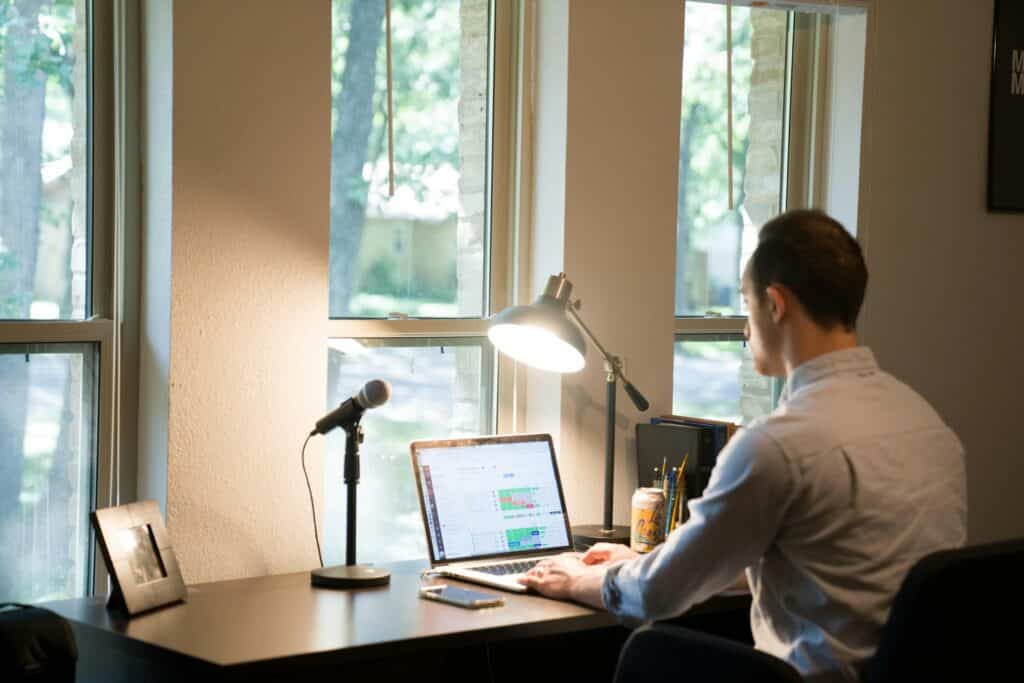Introduction: Timing is Everything in Email Marketing
In email marketing, the difference between success and failure often comes down to one crucial detail: timing. Even the most captivating subject lines and compelling content can fall flat if your email lands in an inbox at the wrong time. So, when is the best time to send emails?
In this guide, we’ll explore data-backed insights, industry trends, and expert recommendations to help you hit “send” at just the right moment. Whether you’re targeting early risers or night owls, we’ll uncover the secrets to optimizing your email schedule for maximum engagement.
1. Why Timing Matters: The Key to Open Rates
In email marketing, timing isn’t just a minor detail—it’s the beating heart of your strategy. The best campaigns are built on precision, ensuring your message lands in front of subscribers at exactly the right moment. So, when is the best time to send emails? The answer depends on your audience, their habits, and your ability to align with their daily routines.
Key Points:
- Morning Advantage: Studies consistently show that emails sent between 9 a.m. and 11 a.m. tend to achieve the highest open rates. This aligns with people checking their inboxes during their morning routines.
- Afternoon Revival: While engagement dips post-lunch, a second peak often occurs between 2 p.m. and 4 p.m. as people browse during work breaks.
- Late-Night Lull: Avoid sending emails late at night, as these are often buried by the morning’s flood of updates.
Why It Works:
Understanding your audience’s behavioral patterns helps you stay relevant and ensures your email stands out amidst inbox noise.
Example in Action:
A subscription meal delivery service found its highest open rates occurred at 10 a.m. on Wednesdays, likely due to customers planning meals midweek. Adjusting to this schedule boosted their engagement rates by 22%.
Pro Tip:
Leverage Brevo’s advanced analytics to identify the most effective send times based on your audience’s behavior. This precision can make all the difference.
2. The Science of Time Zones: Think Global, Act Local
For brands with a global or regional audience, time zones add a layer of complexity to email marketing. Sending at the best time to send emails in one region may mean hitting inboxes at inconvenient hours elsewhere. Addressing this requires a combination of segmentation and automation.
Strategies for Success:
- Segment Subscribers by Time Zone: Divide your audience into time-based groups for more tailored scheduling.
- Use Localized Send Times: Align email delivery with each region’s peak engagement hours.
- Automated Time Adjustments: Tools like Brevo can optimize send times automatically for each subscriber’s location.
Why It Works:
Global campaigns often fail when they ignore time zone nuances. A well-timed email ensures your message is received when subscribers are most attentive, regardless of where they are.
Example in Action:
An eCommerce brand segmented its subscribers across three time zones (EST, PST, GMT) and scheduled emails accordingly. Open rates improved by 18%, and click-through rates jumped 20% as a result.
Pro Tip:
Experiment with time zone-specific promotions. For instance, “Good Morning Deals” for one region and “Evening Exclusives” for another.
3. Testing and Analyzing: Find Your Audience’s Sweet Spot
Email marketing thrives on data, and testing is your best friend when determining the best time to send emails. Every audience is different, and what works for one may not work for another. Continuous analysis ensures you’re always hitting the mark.
How to Test Timing:
- A/B Testing: Send the same email at different times to segments of your audience and compare results.
- Monitor Engagement Metrics: Track open rates, click-through rates, and conversions to identify patterns.
- Adapt and Optimize: Use the data to refine your timing strategy over time.
Why It Works:
Testing allows you to tailor your campaigns to your specific audience rather than relying solely on general industry data. This ensures your strategy remains effective as subscriber behavior evolves.
Case Study:
A digital marketing agency conducted A/B testing for their newsletter, sending one version at 8 a.m. and another at 1 p.m. Over time, they discovered their audience preferred the post-lunch slot, leading to a 15% increase in click-through rates.
Pro Tip:
Use Brevo’s A/B testing tools to experiment with send times and uncover hidden opportunities for engagement.
📧 Maximize Your Campaigns with Brevo!
Discover send-time optimization and advanced analytics to elevate your email marketing. Try Brevo Now!

4. Weekday vs. Weekend: What Works Best?
The debate over weekdays versus weekends in email marketing is ongoing, but understanding your audience’s habits can help you decide. While weekdays often dominate, weekends hold unique opportunities for specific industries and audiences.
Weekday Insights:
- Tuesday to Thursday: These days are widely regarded as the best for sending emails, with peak performance on Tuesday mornings.
- Monday Blues: Avoid Mondays, as inboxes are typically flooded with weekend catch-up emails.
- Friday Fade: Engagement tends to drop as people gear up for the weekend.
Weekend Potential:
- Saturday: Great for B2C brands targeting leisure-oriented audiences.
- Sunday: Works well for lifestyle, entertainment, and content-driven campaigns.
Why It Works:
Your audience’s habits dictate when they’re most likely to engage. Tailoring your schedule ensures you’re meeting them at their most receptive moments.
Example in Action:
A lifestyle brand shifted its focus to Saturday mornings, promoting weekend relaxation products. This small change resulted in a 25% lift in sales for their targeted campaigns.
Pro Tip:
Send a reminder email on weekends for any weekday campaigns that didn’t perform as expected. A second chance can make a big difference.
5. Mobile Behavior: Timing for On-the-Go Engagement
With more than 50% of emails now opened on mobile devices, it’s critical to consider how timing aligns with mobile behavior. People check their phones at predictable intervals, and syncing your emails with these habits can significantly boost engagement.
Key Times for Mobile Users:
- Morning Check-In: Between 7 a.m. and 9 a.m., many users start their day by catching up on emails.
- Lunch Breaks: Engagement spikes around 12 p.m. to 1 p.m., as people browse while eating.
- Evening Relaxation: Another surge occurs between 8 p.m. and 10 p.m. when users unwind.
Why It Works:
Optimizing for mobile habits ensures your emails are seen and acted upon. Sending at the wrong time risks getting buried under newer updates.
Example in Action:
A fitness app targeted early risers with motivational workout emails sent at 6 a.m. This strategy increased morning engagement by 35%, leading to higher app usage and sign-ups.
Pro Tip:
Ensure mobile-friendly designs accompany your well-timed emails. Brevo’s responsive templates make this easy to achieve.
🚀 Perfect Your Timing with Brevo!
From automation to AI-driven insights, Brevo has the tools you need. Start for Free!

6. Seasonal Campaigns: Timing That Changes with the Calendar
Seasonal trends play a major role in determining the best time to send emails. Aligning your campaigns with holidays, seasons, or even specific times of the year can create urgency and boost engagement.
Seasonal Timing Strategies:
- Holiday Campaigns: Emails promoting holiday deals or gift guides perform best when sent early in the day, especially as holidays approach.
- Back-to-School: Retailers can schedule campaigns for weekday mornings to catch parents planning their purchases.
- Summer vs. Winter Trends: During summer, evening emails might perform better as people relax after outdoor activities. In winter, midday campaigns often see more success.
Why It Works:
Tying your emails to the rhythm of the year ensures your campaigns feel timely and relevant. Customers are more likely to open and act on emails that align with their current mindset.
Example in Action:
A travel agency sent early morning emails featuring “Last-Minute Winter Escapes.” By timing these during a January snowstorm, they saw a 40% increase in bookings compared to the previous week.
Pro Tip:
Analyze past performance to identify which seasonal timings worked best for your audience. Then, double down on those strategies.
7. Industry-Specific Insights: One Size Doesn’t Fit All
The best time to send emails varies not only by audience but also by industry. Knowing the habits of your target market within your niche can help you make smarter timing decisions.
Timing Tips by Industry:
- eCommerce: Late morning or evenings often work best, as shoppers tend to browse during breaks or after work.
- B2B: Professionals respond better to emails sent during working hours, particularly between 9 a.m. and 11 a.m.
- Nonprofits: Early evenings tend to drive higher engagement, especially when asking for donations or sharing stories.
Example in Action:
A local restaurant chain sent “Lunchtime Specials” emails at 11 a.m., right as customers were considering their midday meal. This simple timing adjustment boosted open rates by 25%.
Pro Tip:
Use industry benchmarks as a starting point, but don’t hesitate to experiment. Your audience’s behavior might surprise you.
8. The Psychology of Timing: Understanding Human Behavior
Timing isn’t just about logistics—it’s about understanding how people think and act. The best time to send emails often aligns with natural human rhythms and decision-making patterns.
Key Psychological Insights:
- Morning Motivation: People are more likely to take action earlier in the day when their energy and focus levels are higher.
- Afternoon Distraction: Emails sent during work breaks are more likely to be casually browsed, leading to softer but consistent engagement.
- Evening Relaxation: Emotional appeals and storytelling campaigns perform well as people wind down.
Why It Works:
By aligning your timing with psychological tendencies, you can make your campaigns feel more intuitive and compelling.
Example in Action:
A nonprofit sent an evening email titled “End Your Day by Making a Difference.” This emotional timing led to a 20% higher donation rate compared to morning sends.
9. Tools to Perfect Your Timing: Automation and AI
Gone are the days of manually scheduling emails. Today’s tools make it easier than ever to identify and capitalize on the best time to send emails.
Top Features to Look For:
- Send-Time Optimization: Tools like Brevo analyze recipient behavior to recommend the perfect time for each email.
- Advanced Segmentation: Group your audience by factors like time zones, engagement habits, and industry.
- Real-Time Adjustments: Platforms with AI capabilities can dynamically adjust delivery times based on real-time data.
Why It Works:
Automation tools ensure precision and consistency, helping you avoid the guesswork and focus on crafting engaging content.
Example in Action:
An online clothing retailer used Brevo’s automation features to time promotional emails based on individual browsing habits. The result? A 15% increase in conversions and happier customers.
Pro Tip:
Explore Brevo’s analytics dashboard to gain insights into your audience’s habits and adjust your strategies for future campaigns.
10. Real-Life Timing Success Stories
Nothing demonstrates the power of timing better than real-world results. Here are two examples of brands that nailed their email timing:
Case Study 1: Boosting Sales with Perfect Timing
An online shoe retailer tested various send times for their flash sale email. By shifting the timing to 7 p.m., they tapped into post-dinner browsing habits and saw a 35% boost in sales.
Case Study 2: Reviving Engagement with Re-Engagement Emails
A fitness app targeted inactive users with motivational emails sent at 6 a.m., aligning with their subscribers’ morning workout routines. This strategy reactivated 20% of dormant accounts.
Pro Tip:
Use these examples as inspiration but always tailor your timing to your audience’s unique behavior.
Q&A: Timing Your Emails for Maximum Engagement
Q1: What is the best time to send emails for higher open rates?
The best time to send emails typically falls between 9 a.m. and 11 a.m. when most people are checking their inboxes. However, this can vary depending on your audience and industry.
Q2: Does the day of the week affect email performance?
Yes! Tuesday to Thursday are often the most effective days for sending emails. Mondays tend to be too crowded, and Fridays can see lower engagement as people prepare for the weekend.
Q3: How do I determine the best send time for my audience?
Use A/B testing to experiment with different send times and analyze your results. Tools like Brevo offer send-time optimization features that take the guesswork out of the process.
Q4: Are weekends a bad time to send emails?
Not necessarily. While weekends work less well for certain industries, lifestyle brands and entertainment-focused businesses often find success with Saturday or Sunday campaigns.
Q5: How does automation help with email timing?
Automation tools like Brevo adjust delivery schedules based on subscriber behavior, time zones, and past engagement, ensuring your emails land at the perfect time for each recipient.
Conclusion: Timing Is the Key to Email Success
Finding the best time to send emails requires a combination of strategy, testing, and adaptability. By leveraging data, understanding your audience’s habits, and using powerful tools like Brevo, you can maximize engagement and achieve your marketing goals. Start refining your timing today, and watch your campaigns thrive.
Looking for more email marketing tips? Check out our blog library for proven strategies.
Ready to transform your email campaigns? Explore Brevo and start optimizing today!
